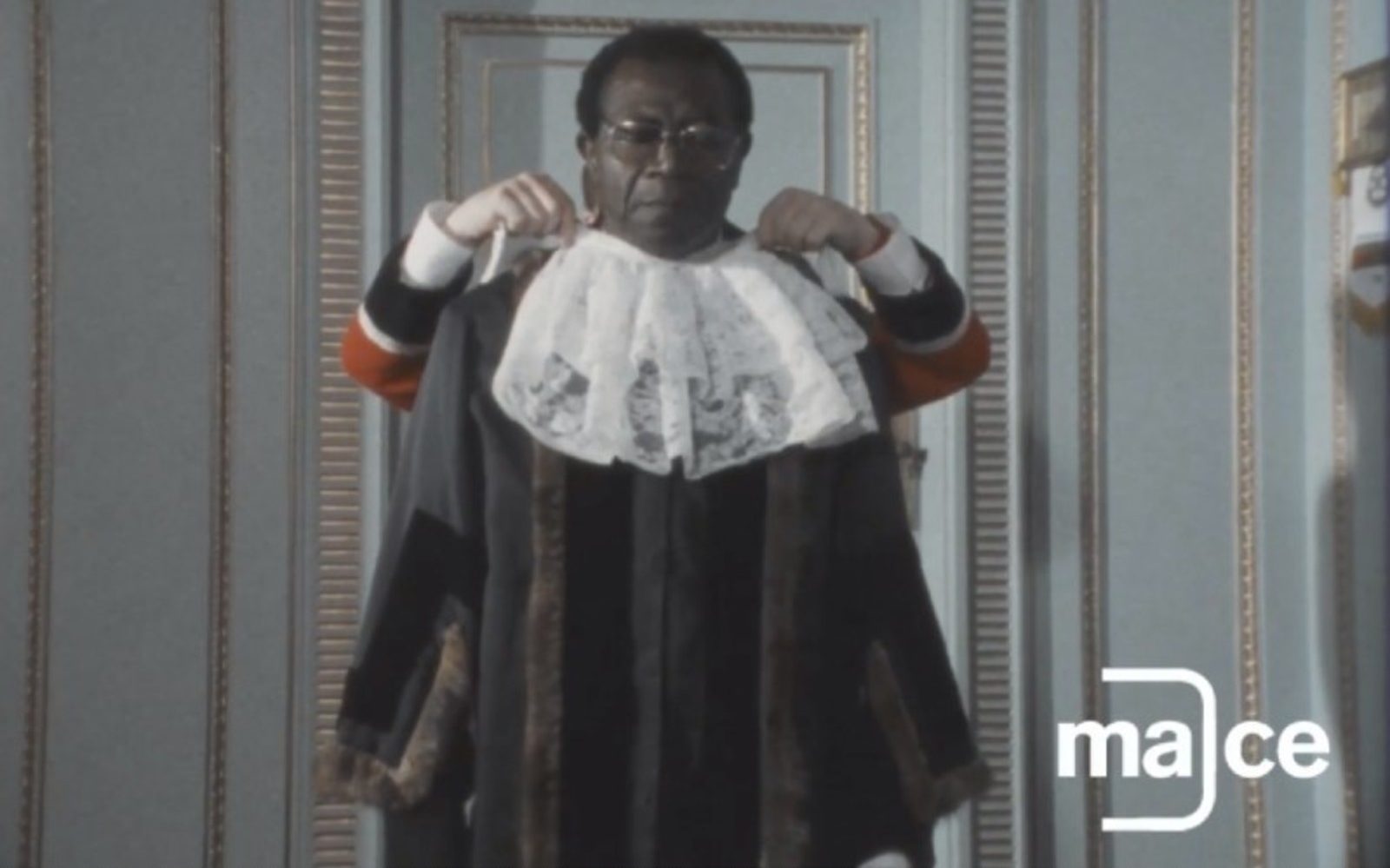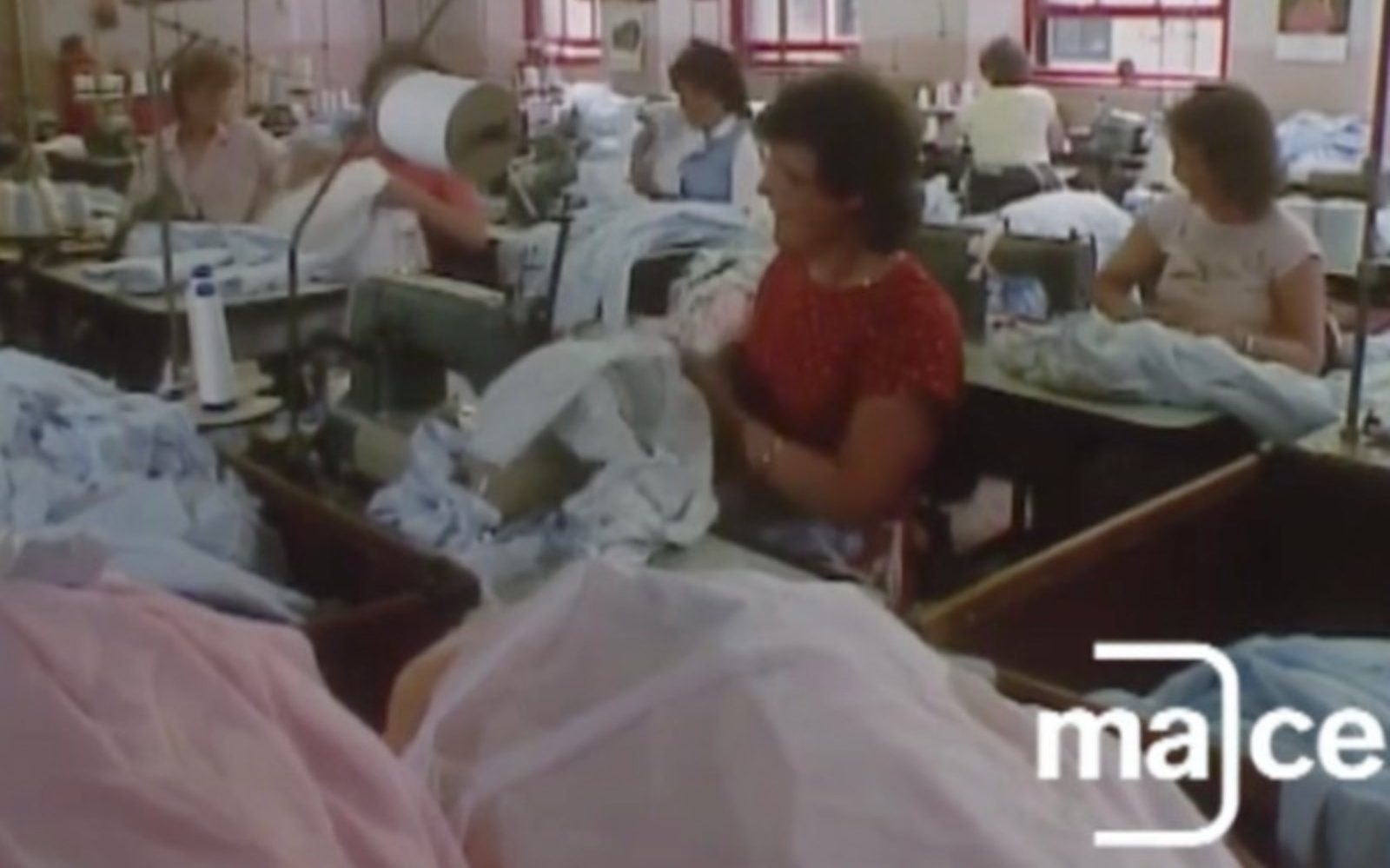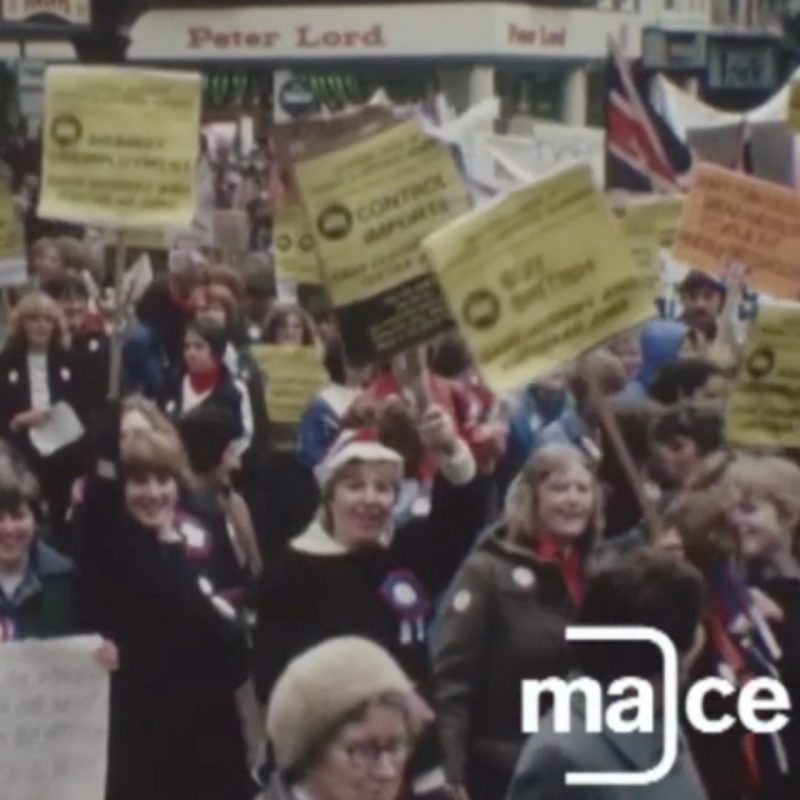Earlier this year, we were delighted to support Compass Presents’ “Dockyards, Demo’s & New Directions” project.

Dockyards, Demo’s & New Directions is an archive film and audio tour along England’s waterways. The project has visited Bristol, Gloucester, Nottingham, Sheffield and Leeds. Compass Presents worked local people to explore pivotal moments of social and political change in their cities. They used archive film and took inspiration from their particpants’ own lived experiences. The project was produced by Compass Presents in partnership with Media Archive for Central England (MACE).
We supported the team on the Nottingham leg of their tour, hosting workshops and connecting them with local people. This included members of Scrambles Photography Group and our own Young Producers.
Watch archive footage about social change in Nottingham
From the knitwear protests of 1981, to female union members leading the charge on rights for factory workers, Nottingham is a city where we are not afraid to make our views heard and advocate for change.

At City Arts, a group of local Nottingham residents curated a selection of archive films held by Media Archive for Central England. The group had a range of interests: from the history of the high street, to transport and worker’s rights. These interests are reflected in their choice of films, available for free on Broadway Cinema’s On Demand service.
Listen to local people share personal memories of Nottingham
Project particpants recorded their own responses to the films, and their personal memories of key locations in the city, to create a short audio tour.
The residents focused on the waterways as a site of political and social change. It is also a space for reflection, allowing them to think about moments in their own lives that correspond to the archive. They recorded their stories by the water, using the location as a muse and audio landscape.
